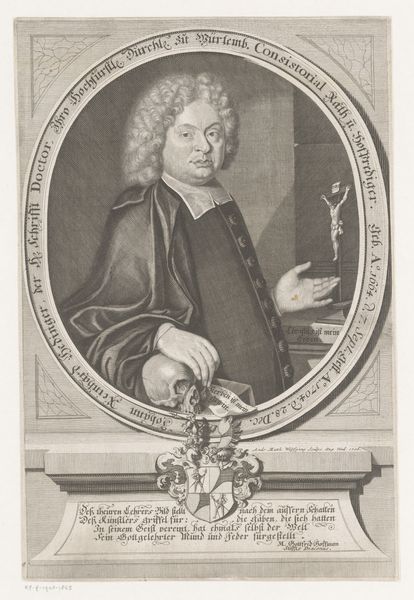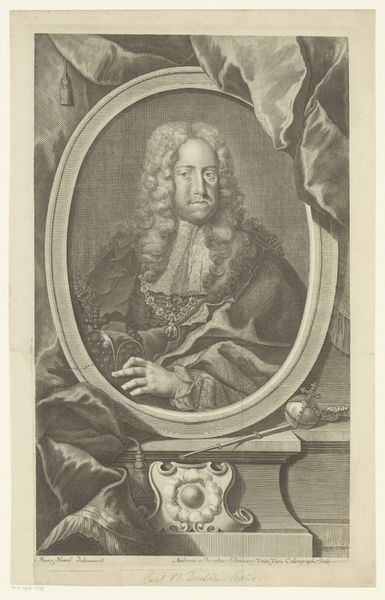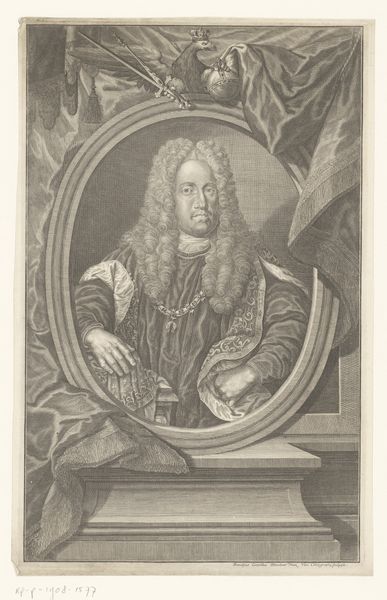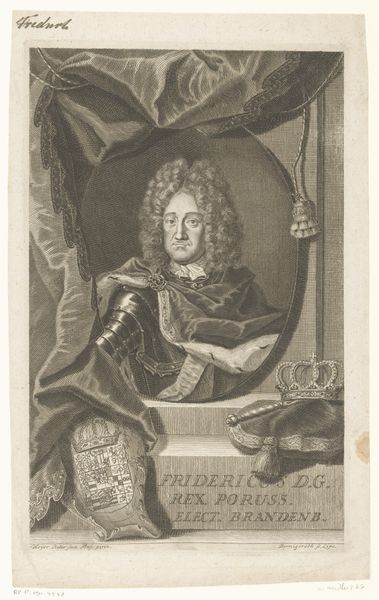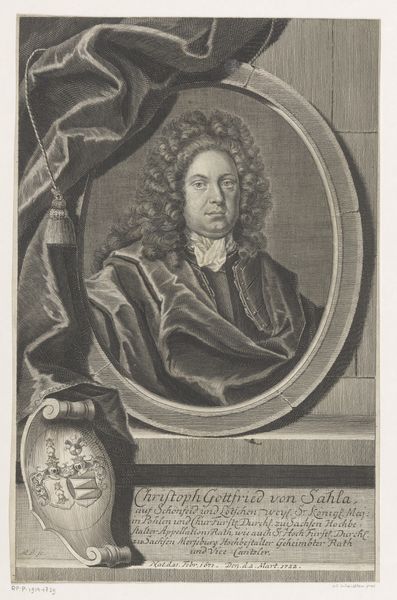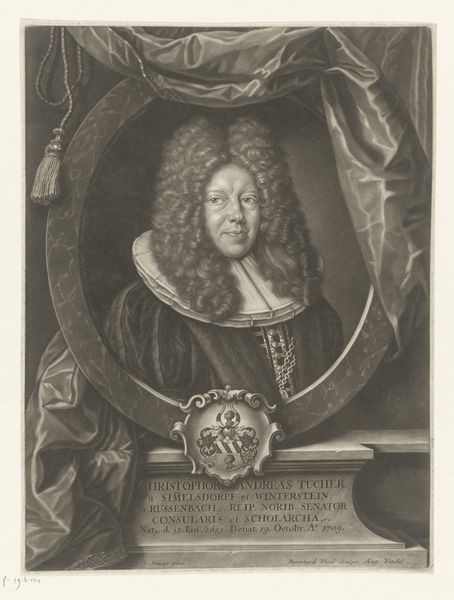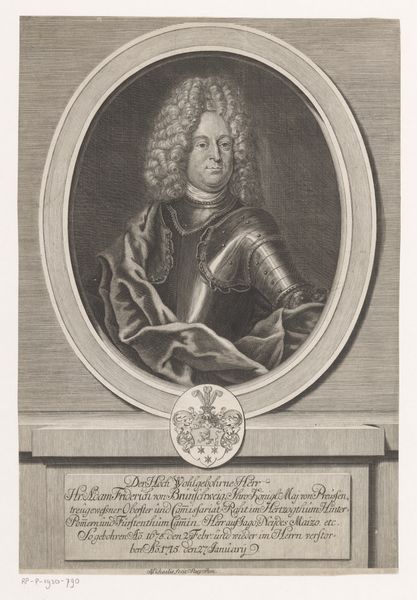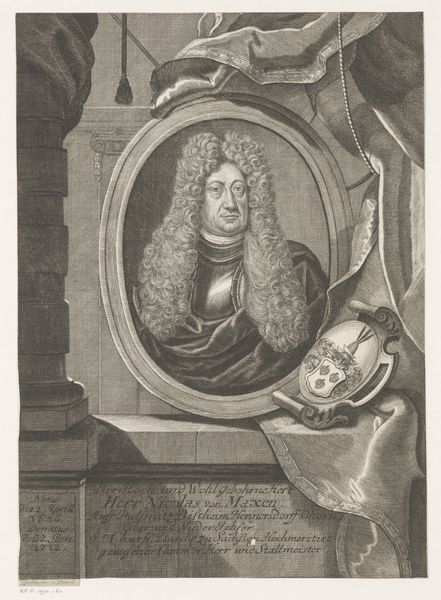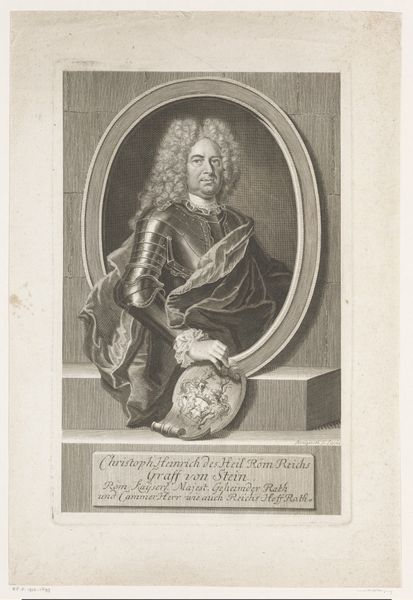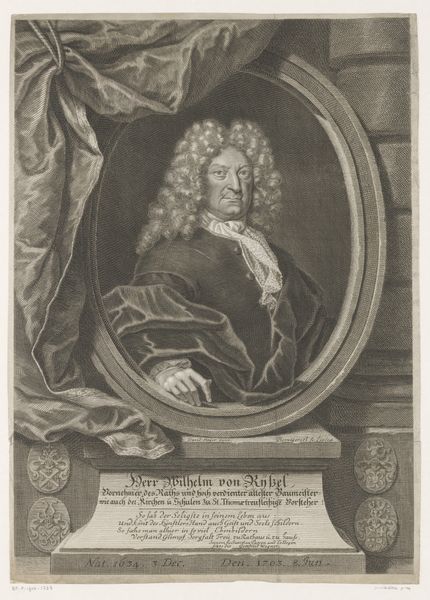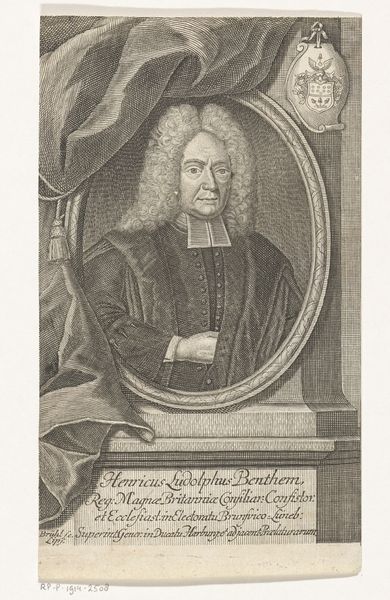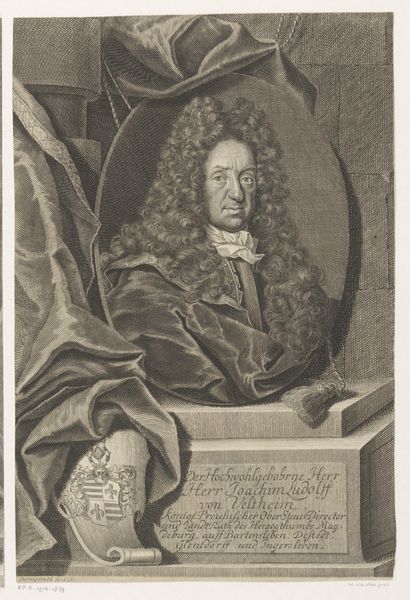
engraving
#
portrait
#
baroque
#
old engraving style
#
engraving
Dimensions: height 169 mm, width 103 mm
Copyright: Rijks Museum: Open Domain
Curator: What strikes you first about this print? The density of the lines is remarkable. Editor: Yes, a symphony of grey tones achieved through masterful hatching! The expression is so intense, yet strangely distant. Curator: Indeed! We’re looking at a work titled “Portret van Ludwig Rudolf von Braunschweig-Wolfenbüttel,” dating from 1732. It’s an engraving by Johann Benjamin Brühl, held here at the Rijksmuseum. Notice how Brühl captured not only his likeness but his stature. Editor: The baroque extravagance is immediately apparent. It screams of status. What symbols are significant here? That cross looks important. Curator: That’s the emblem of the House of Welf, representing his noble lineage. The oval frame acts as a sort of window onto his world, which then sits on its own decorative base. Editor: Windows…that feels right. He's presenting himself, quite deliberately. What about the curtain? It feels both performative and strangely comforting. Curator: That element serves a traditional function: drawing back the curtain to reveal greatness. There is a performative aspect to portraits. In terms of cultural memory, this portrait aimed to immortalize Duke Ludwig Rudolf and fix his image in the minds of his subjects. Editor: Portraits really shaped public perceptions in those days. Without photographs, these images wielded considerable power, setting the tone of an entire court and the very projection of power itself. Curator: This image provided a repeatable and thus distributable representation of power and was not merely about surface-level aesthetics. This image can reach and affect many individuals, thus ensuring consistent public engagement with power through visual means. Editor: I find myself wondering what the masses who saw this thought... Did they buy the message, or were they cynical? Curator: That's always the question. I suppose art’s inherent ambiguity guarantees that varied receptions persist over time, thus influencing a wide range of emotions that endure in collective memory. Editor: That’s the beauty and power of images, I guess. They spark questions, sometimes centuries later. Curator: Yes. An effective image continues to provoke diverse viewpoints across generations.
Comments
No comments
Be the first to comment and join the conversation on the ultimate creative platform.
